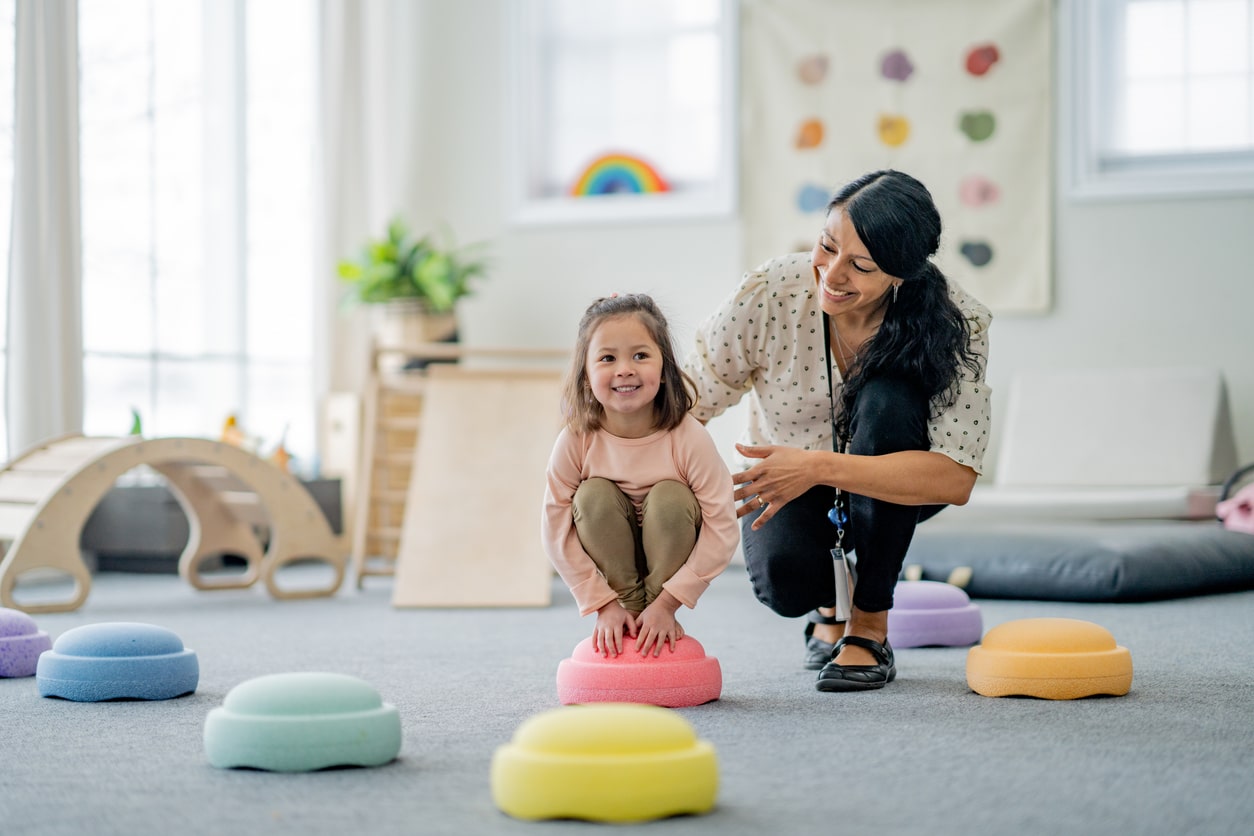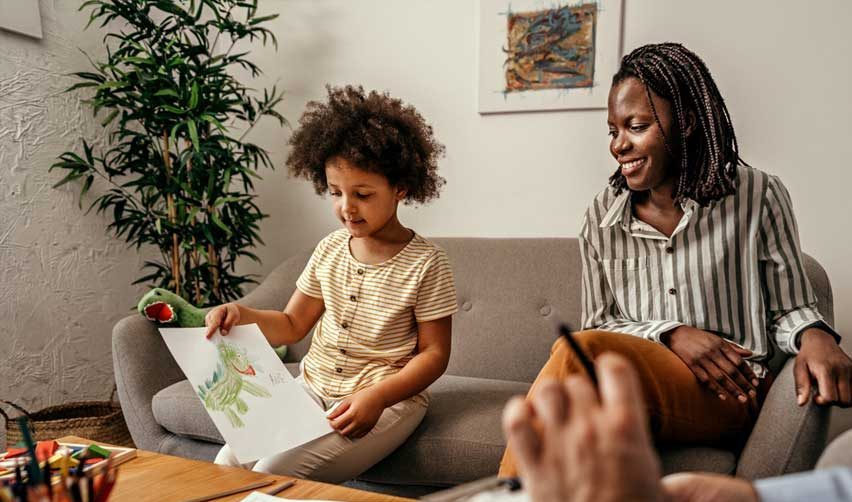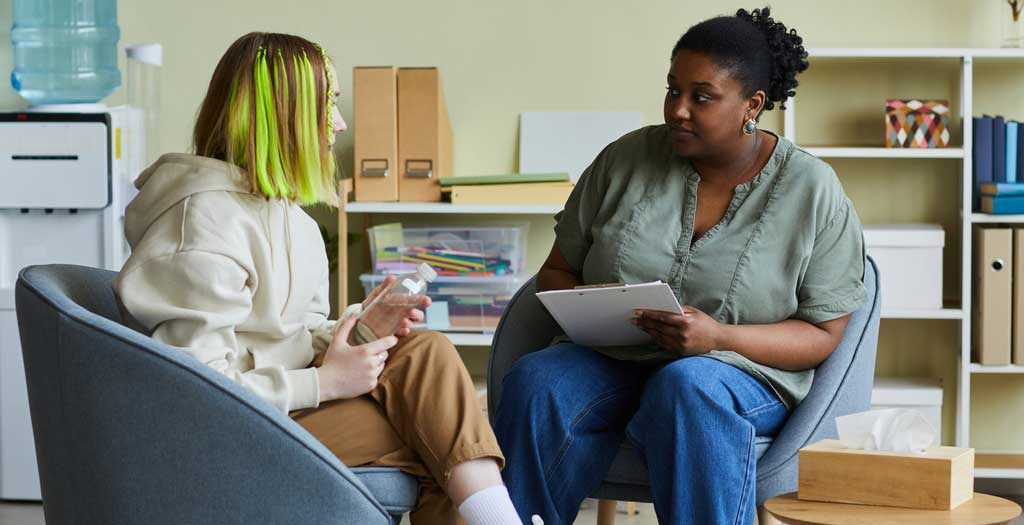Play therapy and play-based learning both centre around the element of play, but are used in different contexts. In this post, we will discuss both modalities, explore why play matters, and examine its relevance in both societal and educational contexts.
What is play therapy?
As mentioned in a previous blog post, “What is Play Therapy?“, this therapeutic modality is a form of psychotherapy that takes place within the context of play. According to Chauhan et al. (2024), “Social interactions within a play therapy environment foster co-operation, empathy, and social understanding.” Therefore, by creating a safe environment for children to express themselves through play within the context of a therapeutic relationship, we can help address problematic symptoms a child may be experiencing, such as behavioural issues.
According to SACAP Educational Psychologist Simona Maraschin, “Play therapy is based on a psychoanalytic framework that aims to explore one’s internal world and processes to help alleviate symptoms.” Therapists use various techniques – including creative visualisation, storytelling, art, dance, and movement – according to the child’s wishes and the therapist’s methods.
“These assessments will help the therapist ascertain more or less how long the therapy should be and to develop short- and long-term goals for the therapy”, says Maraschin, adding that these goals can be for the child or the parents, and sometimes both. Key to the therapeutic play process, emphasises Maraschin, is the support of parents: “It is important to remember that a child’s therapy is often most effective when parents are also willing to help support their child through the process,” she insists.
How does play therapy differ from play-based learning?
Play therapy and play-based learning share similar principles, but they are distinct approaches to learning and development. According to research by Ndlovu et al (2023), “Play-based learning is a pedagogical approach that emphasises the use of play in promoting multiple areas of children’s development and learning.”
Therefore, while play therapy is a therapeutic modality, play-based learning is an educational modality that focuses more on overall child development and learning through play. Although the two may overlap, they are used in different contexts. For example, a teacher might use play to teach various concepts in a classroom setting. However, therapeutic interventions would take place in a more private setting to ensure a safe environment for dealing with emotions and processing trauma.
Through play-based learning, children develop a range of skills through reading, storytelling, and social interaction. Although general play elements apply to both, play-based learning focuses on equipping children for lifelong learning and development. In contrast, play therapy is more focused on addressing current emotional and behavioural challenges. It may also only be engaged in for a limited amount of time, until the child’s functioning improves.
Why play matters
Before we can entertain any discussion of the mechanics of any of the abovementioned modalities, it is essential to understand why we play in the first place. According to Chauhan et al. (2024), physical play develops motor skills and body awareness, while imaginative play enables children to nurture their creativity, express themselves, and build conflict resolution skills. Chauhan et al. (2024) also state that cognitive development, on the other hand, occurs through problem-solving and emotional growth, which involves the expression of emotions.
In the context of play therapy, Maraschin explains that “Unlike adults, children do not have a fully developed emotive language, so play is the child’s way of making himself understood. As adults, we are able to sit in a chair with a therapist and have a conversation, whereas children will struggle to do this. However, through play communication, a deeper understanding of the child can be established,” Maraschin explains.
Regarding play-based learning, research by the LEGO Foundation suggests that play is a crucial component of learning essential skills for navigating a rapidly changing and technologically evolving world. In their whitepaper, Learning Through Play: A Review of the Evidence, the organisation promotes play as a way to ensure “… healthy growth, the acquisition of both knowledge and thinking skills, as well as the development of the personal characteristics necessary to successfully navigate this future reality.”
The LEGO Foundation also shares that play-based learning should include five characteristics, which include:
- Joyful: When learning is joyful, it fuels dopamine release, which can help improve memory, attention, motivation and creativity.
- Iterative: Practising different activities, such as trying and learning new games, helps develop flexible and innovative thinking through consistent adaptation and improvement.
- Actively engaging: Agency is a crucial element of effective learning, and children learn better when they can take charge, which helps develop executive function, i.e., managing day-to-day tasks.
- Meaningful: If play has meaning, children can form connections and build a solid grasp of the world around them, for example, recognising animals in real life from their story books.
- Socially interactive: Building social relationships is a vital part of learning, as it helps develop empathy and manage stress and mental health.
Not all of these elements need to be present in every educational play session. However, play-based learning strategies can be more effective by focusing on creating learning experiences that consider them.
How are these modalities used in the real world?
Chauhan et al. (2024) share various case studies that support the use of therapeutic interventions involving play in helping children cope with challenging experiences. Two of these examples include the following:
- After corrective plastic surgery to repair an eight-year-old girl’s amputated right hand, dramatised play helped the child express unconscious fears and feelings, including processing the trauma of the accident. By being able to express her feelings and emotions freely through play, the child regained a sense of control, built self-esteem, and was able to return to school.
- After losing his father in an accident, a 13-year-old boy engaged in play therapy sessions that helped him express his emotions. Through storytelling, he used animal puppets to relate his traumatic experiences. Through play, he discussed ways to cope with his current reality, which all contributed to improving his socioemotional functioning.
With regards to play-based learning, Kolb et al. (2010) conducted a 15-year study of diverse participants who took part in a pick-up softball league in the United States. According to this study, the practice of “free play” softball created what Kolb et al. call a “ludic space”, which is ideal for experiential learning and where participants learn valuable skills such as:
- Competitiveness versus fair play
- Self-absorption versus empathy
- Forgiving oneself
- Experiencing the authentic self
The findings of the case study confirm that games provide an optimal environment for experiential learning. Kolb et al. refer to the process as “higher-order learning”. While the case study didn’t focus specifically on child development, it demonstrates that people can acquire necessary skills through play, which is relevant for developing play-based learning strategies in schools and other educational institutions.
Learn more about play and professional development opportunities
If you’re interested in learning more about childhood development, take a look at our short online course, Psychological Theories of Child & Adolescent Development. This micro-credential explores critical milestones in development and shares knowledge about the relational aspects that impact and influence behaviour.
To deepen your understanding of how play can support childhood development, our Understanding Play Therapy workshop offers a comprehensive overview of this modality, its underlying principles, and practical applications. Participants will learn how to integrate this modality into their practice, consider ethical and cultural considerations, and provide safe, inclusive, and appropriate interventions.
Counselling Children & Youth also includes a comprehensive section on play therapy, providing a deep understanding of this modality. Participants will learn various counselling strategies, including play, to help address issues that affect children and youth, including grief, family break-up, abuse and bullying.
Other related SACAP Global courses in child development include the following:





